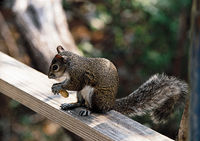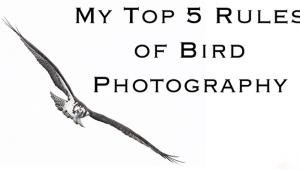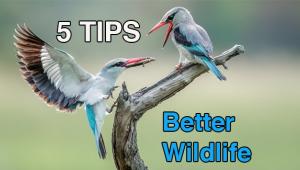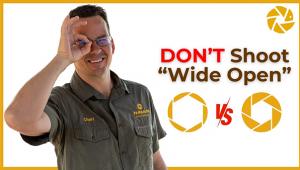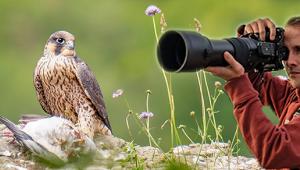Point & Shoot: Wildlife Photography with a Point-and-Shoot Camera
|
Photographing wildlife presents special challenges, especially if you own a compact camera. You may not have the powerful lenses that professionals use, but you can still do nicely with a moderate telephoto setting on your point-and-shoot camera, if it has one. As with household pets, wild animals are quick-moving and won't pose for you. To capture them on film, you must be very patient, be willing to shoot a lot of film, and persevere. Watch through your lens until you find an opportune moment, and click your shutter.
So you live in the middle of a city, with no prospects of going on safari to Africa anytime soon—where can you find wildlife to photograph? It's easier than you might think. There are zoos, nature preserves, aquariums, pet shops, farms and aviaries, some of which may be close to home. Whether you photograph animals on safari, in a national park, or at the zoo, remember that most wildlife is most active in the morning or late in the afternoon. At noon, they're often napping. Besides, as with shooting portraits of people, it's best to avoid harsh, midday sun when photographing animal close-ups. The only benefit to bright daylight is that you can use a fast shutter speed to freeze action when photographing creatures on the move. Most wild animals keep their distance from people. And if they're dangerous, you'll want to avoid them too. Don't be fooled by wildlife that appears to be tame. For example, some people take risks when they get too close to the normally calm, slow-moving bison at Yellowstone National Park. (I've even seen people ask their children to stand next to these creatures for a photo!) Exceptions may be wildlife sanctuaries where the animals are accustomed to humans, and don't feel threatened by us. Many wild animals—like deer at some national parks—will tolerate your presence if you don't seem too threatening. Keep your movements to a minimum, and avoid making sudden movements altogether. If you're taking pictures of zoo animals, this problem is solved because they're separated from you by enclosures. Avoid bars, moats, rails or other distractions in your photos. Depending on the animal, you can sometimes stick your camera lens through a chain-link fence (unless you're photographing curious critters like ostriches that are likely to snap at your lens). If your lens is long enough, aim to get portraits of the animal whenever possible. Simple compositions usually result in your most appealing images. On the other hand, some animal environments at the zoo are attractive and appear fairly natural looking, and you'll want to include these in your compositions—like flamingos in a tropical setting next to a waterfall. In this case, a wide-angle lens setting will show the animal in an environment that may approximate its natural home in the wild. Alternate wide view with tight portrait shots whenever possible to get a variety of pictures. Panning your camera to follow the motion of the subject is a creative approach for photographing a bird in flight or a running animal. Use a slow film—like ISO 100—and put your camera on its landscape mode to give you a slower shutter speed (the sports mode will freeze action). Click the shutter as the action begins and rotate your body to follow the movement of the animal. A good way to practice this technique ahead of time is to stand on the side of a road and pan the camera on cars as they pass your field of view. A successful panning shot depicts a relatively sharp-focused subject against a blurred background, giving the impression of motion and speed. |
- Log in or register to post comments
